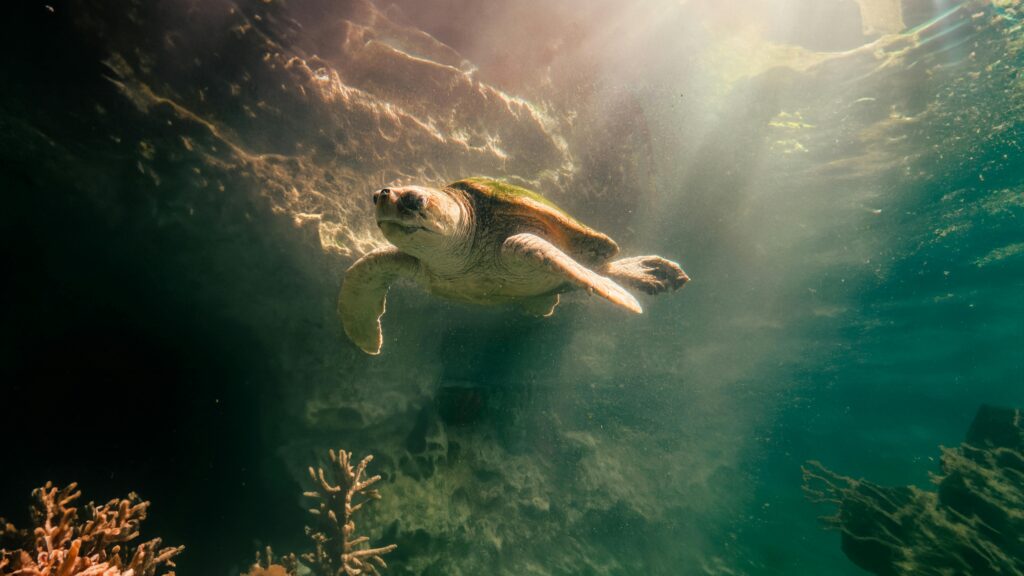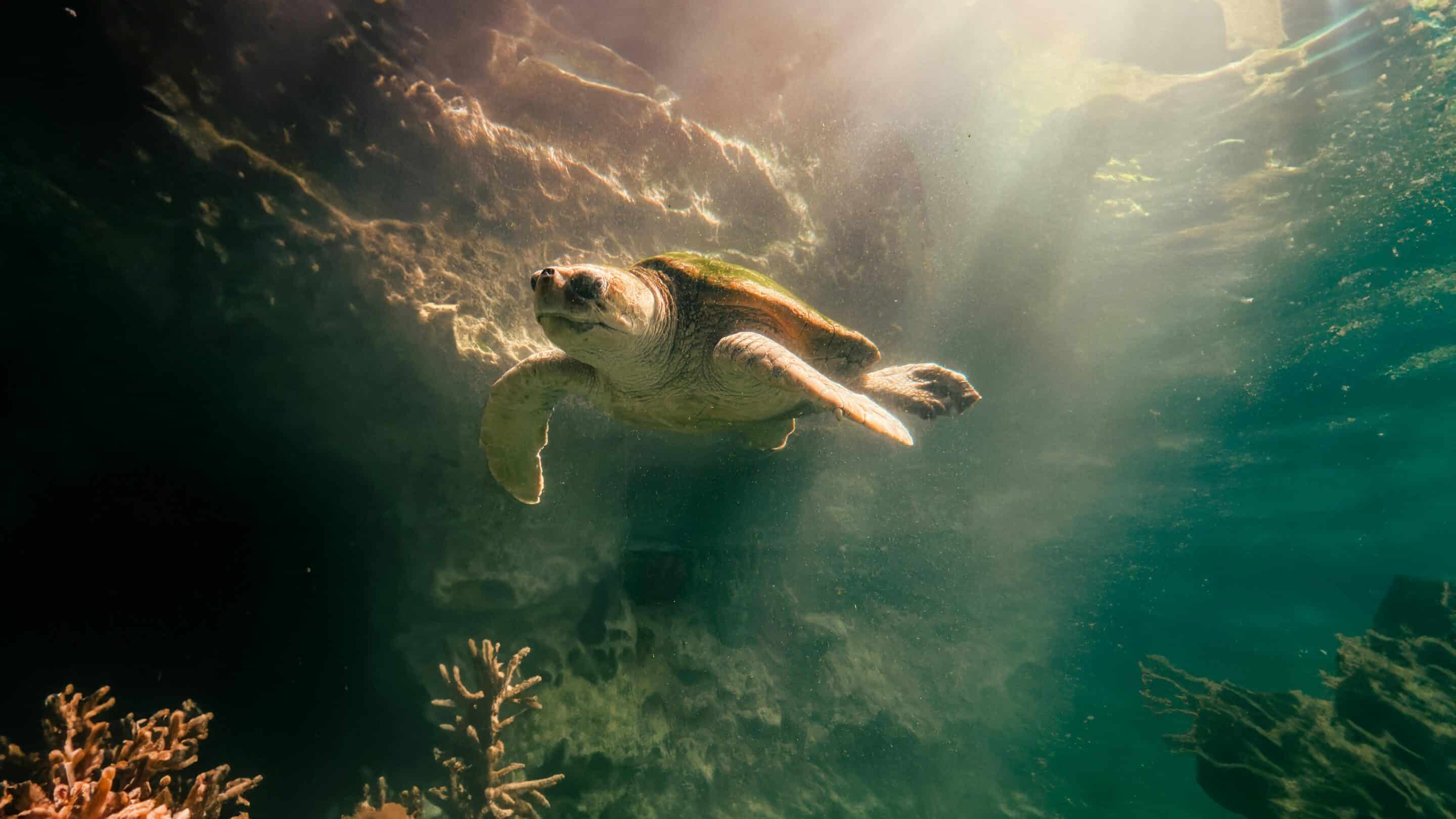Imagine embarking on an unforgettable adventure where lush rainforests come alive with the symphony of exotic animals. Get ready to be captivated by the rich wildlife of Costa Rica. This tropical paradise offers a plethora of thrilling experiences for wildlife enthusiasts. From spotting elusive sloths lazily hanging from tree branches to marveling at the vibrant colors of toucans darting through the sky, every moment in Costa Rica is a chance to witness nature at its most awe-inspiring. Whether you’re exploring the dazzling biodiversity of Tortuguero National Park or discovering the hidden gems of Corcovado, Costa Rica promises an immersive experience that will leave you in awe of its extraordinary wildlife. Your journey awaits, so pack your sense of wonder and get ready to embark on an incredible adventure of a lifetime.
The Biodiversity of Costa Rica

Understanding Costa Rica’s rich ecosystem
Costa Rica is a country known for its exceptional biodiversity, boasting an astonishing array of wildlife. With a landmass that covers just 0.03% of the Earth’s surface, Costa Rica is home to nearly 5% of the world’s biodiversity. This remarkable concentration of flora and fauna is due to a unique combination of factors, including its geographical location, diverse habitats, and favorable climate.
The influence of climate on wildlife
Costa Rica’s tropical climate plays a crucial role in supporting its rich wildlife. The country experiences a wet and dry season, with the wet season typically spanning from May to November. During this period, heavy rainfall nourishes the lush rainforests and provides a fertile ground for the growth of an abundant variety of plants, which in turn sustains a myriad of animal species. The dry season, on the other hand, brings forth a different set of conditions, with water sources becoming scarcer and vegetation drying up. This prompts wildlife to adapt and migrate in search of sustenance.
An overview of endemic and migratory fauna
Costa Rica is home to an impressive number of endemic species, meaning they are found nowhere else in the world. From the startlingly beautiful red-eyed tree frog to the elusive quetzal bird, these unique creatures have evolved to thrive in the diverse ecosystems of Costa Rica. Additionally, the country serves as a vital stopover and wintering ground for migratory species. Many birds, such as the vibrant hummingbirds and magnificent raptors, make their way to Costa Rica to escape the harsh winters of North America. This convergence of endemic and migratory fauna makes for an unparalleled wildlife experience in Costa Rica.
Exploring the Rainforests
Discovering the diverse species inhabiting the rainforests
Venturing into Costa Rica’s rainforests is like stepping into a wildlife enthusiast’s dream. These majestic ecosystems are teeming with an astonishing variety of species, both big and small. From the towering trees to the hidden canopy dwellers, every nook and cranny of the rainforest holds a surprise waiting to be discovered. It’s not uncommon to encounter charismatic creatures such as monkeys, sloths, toucans, and even big cats like jaguars and pumas. The biodiversity present in the rainforests of Costa Rica is simply awe-inspiring.
Experiencing the vibrant flora and fauna
The rainforests of Costa Rica are an explosion of colors and sounds. Walking through the dense foliage, you’ll be surrounded by a symphony of bird calls, the hum of insects, and the rustle of leaves as animals move about. The vibrant flora of the rainforests adds to this sensory experience, with an abundance of orchids, bromeliads, and towering trees creating an enchanting atmosphere. The intricate interplay between the flora and fauna of the rainforests is a testament to the intricacies of nature’s design.
Guided tours and treks in the rainforests
To truly immerse yourself in the wonders of Costa Rica’s rainforests, it’s highly recommended to join a guided tour or trek. Experienced guides possess a deep understanding of the local ecosystems and can lead you to the most breathtaking sights and encounters. They’ll help you spot elusive animals, point out rare plants, and provide invaluable insights into the delicate balance of the rainforest. Whether you prefer a leisurely stroll or a more adventurous hike, there are options available for every level of fitness and interest.
Wildlife Safaris in Costa Rica
Types of wildlife safaris available
Costa Rica offers a variety of wildlife safaris, each tailored to cater to different interests and preferences. Jeep safaris take you deep into the national parks, allowing you to explore the diverse habitats and observe wildlife from the comfort of a 4×4 vehicle. Boat safaris offer a unique perspective, taking you along rivers and coastlines, where you can spot crocodiles, dolphins, and countless bird species. For those seeking a more intimate experience, walking safaris guided by knowledgeable naturalists provide an up-close encounter with the fascinating creatures of Costa Rica.
Key sights and activities during a wildlife safari
During a wildlife safari in Costa Rica, you can expect to witness an incredible array of sights and activities. National parks like Tortuguero, Manuel Antonio, and Corcovado are renowned for their remarkable biodiversity, with each offering a unique glimpse into the country’s wildlife. From watching sea turtles nesting on the beaches of Tortuguero to hiking through dense rainforests in Corcovado, every moment spent during a wildlife safari is filled with awe-inspiring encounters. Don’t miss out on the opportunity to zip line through the treetops or take a refreshing dip in pristine waterfalls along the way.

Tips for planning a wildlife safari
When planning a wildlife safari in Costa Rica, there are a few tips to keep in mind. Firstly, research the best time to visit based on the species you wish to see, as some animals have specific mating seasons or migration patterns. Secondly, book your safari with a reputable tour operator who prioritizes ethical wildlife encounters and supports local conservation efforts. Finally, pack appropriate clothing and gear such as sturdy footwear, lightweight and breathable clothing, insect repellent, sunscreen, and a good camera to capture the magic of your wildlife encounters.
Spotting Costa Rica’s Big Cats
Locations with high leopard, jaguar, and puma sightings
If the allure of spotting big cats in the wild has always fascinated you, then Costa Rica offers fantastic opportunities to make that dream come true. The country is home to several protected areas known for their high density of leopard, jaguar, and puma populations. Tortuguero National Park, Corcovado National Park, and La Amistad International Park are just a few of the locations where sightings of these elusive felines are relatively common. Exploring the dense forests and observing the behavior of these majestic creatures in their natural habitat is an experience that will stay with you forever.
Best time for big cat sightings
To increase your chances of spotting big cats in Costa Rica, it’s advisable to visit during the dry season, which typically runs from December to April. During this period, water sources become scarce, forcing animals to congregate around remaining rivers and waterholes. Increased visibility due to less dense vegetation also helps in spotting elusive creatures like big cats. However, it’s important to note that wildlife sightings are never guaranteed, as these magnificent predators are inherently elusive and masterfully camouflaged within their environment.
Staying safe while tracking big cats
While the thrill of spotting big cats in their natural habitat is exhilarating, it’s essential to prioritize safety. Always adhere to the guidance of experienced guides and park rangers who are well-versed in tracking and observing these animals. Keep a safe distance and never attempt to approach or provoke a big cat. Remember that you are a guest in their territory and it’s crucial to minimize disturbance to their daily routines. By respecting their space and observing proper safety protocols, you can ensure a memorable and safe wildlife encounter.
Costa Rica’s Marine Life
Marine species unique to Costa Rica
Costa Rica’s incredible biodiversity extends beyond its rainforests and stretches into the ocean. The country’s coastal areas and offshore islands are teeming with an abundance of marine species, many of which are found exclusively in this region. From colorful coral reefs to majestic sea turtles, dolphins, and even elusive whales, the marine ecosystems of Costa Rica offer a mesmerizing underwater world waiting to be explored. Snorkeling or scuba diving in these waters will unveil a dazzling array of vibrant fish, seahorses, stingrays, and anemones, creating an unforgettable experience for marine enthusiasts.
Excursions for snorkeling and scuba diving
For those interested in getting an up-close look at Costa Rica’s marine life, numerous excursions cater to different skill levels and interests. Snorkeling trips are ideal for beginners or those who prefer to stay close to the surface. You can explore the vibrant coral reefs of Cahuita National Park, marvel at the abundance of marine life in the Isla del Cano Biological Reserve, or even snorkel alongside gentle giants like whale sharks in certain seasons. Experienced divers have the opportunity to venture deeper into the ocean, exploring underwater caves, volcanic formations, and encountering larger marine species such as sharks and dolphins.
Understanding the importance of coral reefs
Coral reefs are not only visually stunning but also serve as vital habitats for numerous marine species. These fragile ecosystems are home to countless fish species, provide nursery grounds for juvenile marine life, and protect coastlines from erosion. Unfortunately, coral reefs worldwide are under threat due to climate change, pollution, and irresponsible human activities. It’s crucial to approach snorkeling and diving with mindfulness, respecting these delicate environments by not touching or damaging corals and following responsible diving practices. By appreciating the beauty of coral reefs while contributing to their preservation, we can help ensure their survival for future generations to enjoy.
Experiencing Birdwatching in Costa Rica
Varieties of birds found in Costa Rica
Costa Rica is a bird enthusiast’s paradise, with over 900 bird species recorded within its borders. From brilliantly colored toucans and resplendent quetzals to tiny hummingbirds and large raptors, the avian diversity in Costa Rica is awe-inspiring. The country’s varied habitats, ranging from rainforests to cloud forests, mangroves, and wetlands, offer an unparalleled opportunity to observe a wide range of bird species. Whether you’re an experienced birder or a novice, visiting Costa Rica will undoubtedly provide you with countless opportunities to spot and appreciate these winged wonders.

Ideal spots for birdwatching
Costa Rica’s extensive network of national parks and reserves provides an ideal habitat for countless bird species. Monteverde Cloud Forest Reserve, La Selva Biological Station, and Carara National Park are among the top destinations for birdwatching, boasting an impressive number of resident and migratory bird species. It’s highly recommended to engage the services of local birding guides who possess an intimate knowledge of the best birdwatching spots and can identify the elusive species you may encounter during your expedition. Be prepared for early mornings and maintain a quiet and patient demeanor to maximize your chances of spotting rare and elusive birds.
Equipment and resources for birdwatching
To fully enjoy the experience of birdwatching in Costa Rica, it’s advisable to bring along essential equipment such as a pair of binoculars, a field guide specific to the region, and a camera to capture the breathtaking avian beauty you’ll encounter. Binoculars allow you to observe birds in detail, while a field guide assists in identifying different species based on their distinct characteristics. Additionally, joining a local birdwatching club or online communities can provide valuable resources, such as bird checklists and updates on recent sightings, enhancing your birding experience in Costa Rica.
Costa Rica’s Reptilian and Amphibian Denizens
Exploring the world of frogs, snakes, and lizards
Costa Rica is not only brimming with charismatic mammals and colorful birds but also harbors an astonishing array of reptiles and amphibians. The country boasts over 220 species of reptiles and 200 species of amphibians, many of which are uniquely adapted to different ecosystems. From the iconic poison dart frogs with their vibrant hues to the stealthy snakes and camouflaged lizards, exploring the world of Costa Rican herpetofauna is a thrilling adventure. Whether you encounter a spectacled caiman basking in the sun or witness the incredible camouflage of a leaf-tailed gecko, these encounters will leave you with a newfound appreciation for these often-misunderstood creatures.
Popular locations to experience reptiles and amphibians
To maximize your chances of spotting reptiles and amphibians in Costa Rica, there are several popular locations worth exploring. The Osa Peninsula, with its vast rainforests and marshy areas, is a haven for a wide range of species. Tortuguero National Park, known for its turtle nesting sites, is also home to numerous amphibians and reptiles. Additionally, the Monteverde Cloud Forest Reserve and Arenal Volcano National Park offer a chance to encounter unique high-altitude reptiles and amphibians. Engaging the services of knowledgeable local guides will significantly increase your chances of locating and observing these elusive creatures.
Safety guidelines while interacting with amphibians and reptiles
It’s important to approach interactions with amphibians and reptiles in Costa Rica with safety in mind. Many species possess defensive mechanisms or venomous bites, and it’s essential to never attempt to touch or handle any reptile or amphibian unless you are accompanied by a trained professional. Respect their space and observe from a safe distance to avoid causing stress or harm to the animals. Additionally, be mindful of your own safety by wearing appropriate footwear and keeping a watchful eye on your surroundings, especially in areas where venomous snakes may be present.
Photography Opportunities in Costa Rican Wildlife
Tips for wildlife and nature photography
Costa Rica offers endless opportunities for capturing breathtaking moments in nature through photography. To make the most of your wildlife photography experience, keep these tips in mind. Firstly, practice patience and be prepared to wait for the perfect shot. Wildlife encounters can be unpredictable, and capturing a stunning image often requires perseverance. Additionally, familiarize yourself with the behavior and habits of the species you wish to photograph, as this will allow you to anticipate key moments. Finally, strive for ethical photography practices by avoiding disturbing or harassing animals for the sake of a photograph. Remember, your respect for their natural behavior is paramount.
Best places for wildlife photography
Costa Rica is a paradise for wildlife photographers, with an abundance of stunning natural landscapes and diverse flora and fauna. The national parks and reserves present countless opportunities for capturing captivating images. Tortuguero National Park, with its labyrinth of canals, offers stunning backdrops for photographing a variety of wildlife. Manual Antonio National Park showcases the intricate interplay between tropical rainforests and pristine beaches, providing ample opportunities for unique compositions. Other notable destinations include Corcovado National Park, Monteverde Cloud Forest Reserve, and the remote Osa Peninsula, each offering its own unique photographic experiences.
Useful photography equipment and gear
To capture the vibrant biodiversity of Costa Rica, it’s essential to have the right photography equipment and gear. A camera with a versatile zoom lens is recommended for wildlife photography, allowing you to get both wide-angle and close-up shots. Telephoto lenses in the range of 200-400mm are particularly useful for capturing distant subjects in detail. Additionally, investing in a sturdy tripod and a quality camera bag to protect your equipment during outdoor adventures is highly recommended. Other essentials include spare batteries, memory cards, lens cleaning equipment, and a waterproof cover to shield your gear from unexpected rain showers.
Conservation Efforts in Costa Rica
Role of conservation in preserving Costa Rican wildlife
Costa Rica has long been recognized as a global leader in conservation efforts. The country’s commitment to preserving its rich biodiversity has resulted in the establishment of extensive protected areas, covering over 25% of its landmass. Conservation initiatives focus on habitat protection, conflict resolution between wildlife and human populations, and efforts to combat illegal wildlife trafficking. Furthermore, Costa Rica has made impressive strides in sustainable development, promoting eco-tourism and pursuing renewable energy sources. By prioritizing conservation, Costa Rica ensures that its remarkable wildlife will continue to flourish for generations to come.
Visiting conservation centers
For wildlife enthusiasts interested in learning more about Costa Rica’s conservation efforts, visiting conservation centers offers a unique and educational experience. These centers play a critical role in rescue, rehabilitation, and release programs for injured or orphaned animals. Here, you can witness firsthand the dedication of conservationists and interact with animals that have been given a second chance at life. Sloth sanctuaries, butterfly gardens, and sea turtle hatcheries are among the many centers scattered throughout the country, each contributing to the preservation of Costa Rica’s iconic species.
How tourists can contribute to conservation efforts
As a tourist in Costa Rica, you have the power to contribute to the country’s conservation efforts. By choosing eco-friendly accommodations, supporting local eco-tourism initiatives, and opting for sustainable transportation methods, you reduce your ecological footprint and support businesses that prioritize conservation. Respect for wildlife and their habitats is crucial. Avoid littering, stay on designated trails, and avoid purchasing products made from endangered species. Additionally, consider donating to local conservation organizations or volunteering your time and skills to assist in ongoing conservation projects. By actively engaging in responsible and respectful tourism, you become an ally in preserving Costa Rica’s remarkable biodiversity.
Community Eco-Tourism in Costa Rica
Exploring the eco-tourism initiatives by local communities
Costa Rica’s commitment to sustainable travel extends beyond protected areas and into local communities. Many communities throughout the country have embraced eco-tourism as a means of promoting economic development while preserving their cultural heritage and natural surroundings. From sustainable farming practices to community-owned lodges and guided tours led by local experts, these initiatives offer an authentic and immersive experience that directly benefits the communities involved. By engaging in community eco-tourism, you not only support local livelihoods but also gain a deeper understanding of the country’s rich cultural diversity.
Benefits of choosing eco-tourism
Choosing eco-tourism in Costa Rica provides various benefits for both travelers and local communities. By staying in community-owned lodges, you have the opportunity to interact with locals, learn about their traditions, and contribute directly to their economic well-being. Furthermore, eco-tourism often provides a more sustainable alternative to traditional tourism, minimizing negative impacts on the environment and fostering conservation efforts. This type of travel encourages responsible practices such as waste reduction, energy conservation, and the support of local businesses. Embracing eco-tourism ensures that the unique character and natural beauty of Costa Rica are preserved for future generations to enjoy.
Role of eco-tourism in promoting sustainable travel
The rise of eco-tourism has played a significant role in promoting sustainable travel practices in Costa Rica. By placing an emphasis on environmental responsibility, community engagement, and cultural preservation, eco-tourism encourages travelers to adopt a conscientious approach to their journeys. Tourists are invited to experience Costa Rica’s natural wonders while minimizing their impact on fragile ecosystems and supporting local communities. These experiences foster a greater appreciation for the importance of conservation and sustainability, inspiring travelers to carry these principles with them beyond their Costa Rican adventure.
In conclusion, Costa Rica’s rich biodiversity offers a haven for wildlife enthusiasts seeking extraordinary experiences. From exploring the enchanting rainforests to encountering big cats, marine life, birds, reptiles, and amphibians, the country unfolds a tapestry of natural wonders at every turn. Through responsible and respectful tourism, supported by eco-tourism initiatives and conservation efforts, visitors can not only witness the magic but also actively contribute to the preservation of Costa Rica’s remarkable wildlife. By immersing yourself in this biodiversity hotspot, you’ll discover that Costa Rica truly is a paradise that must be experienced to be fully appreciated.







0 Comments